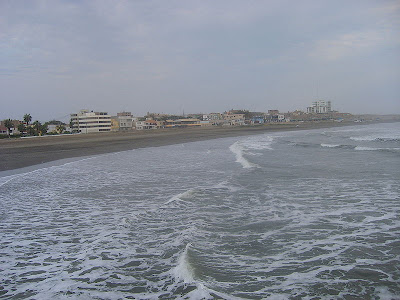Volunteering in the Sacred Valley
Volunteering in Peru is a unique experience and an interchange between the volunteer and members of Peruvian society which is greatly advantageous to both. There are many direct and indirect advantages of volunteering in Peru, or anywhere else in Latin America for that matter. Peruvian people are generally friendly and open people and the country is relatively cheap to live and travel in plus it is also very safe compared to many other developing countries, much safer than most in Africa it is said.
Not only do volunteers have the opportunity to practice their language skills during the day in a practical manner without studying (which is often the best and fastest way to learn), but volunteering is an exchange where volunteers learn from the Peruvians and Peruvians in need get the help they need an gather information about the countries of the volunteers.
Volunteers can gain very helpful life and work experiences that they probably would not find in their own country, bolster their CVs and get to discover more about the rich Peruvian culture in a way that is very different than that learned in a classroom. There is no real age limit for people wanting to involve themselves in volunteer programs, only a requirement that they should be willing and able to help people less fortunate than themselves. No previous experience is necessary but a level of Spanish that enables holding a basic conversation would be very useful. Typically, volunteers would take classes in Spanish while volunteering to help them communicate, probably at a local school which may also arrange the volunteering program.
There are many volunteering programs in Peru. A program typically consists of a four-week long study and working period, the study period being one that assists the volunteers in the projects on which they will be working, as we have mentioned. A work permit is not needed to volunteer or study in Peru as technically visitors will be tourists and be given between 60 and 90 days free stay upon entering the country.
There are some medical volunteering opportunities in hospitals but these are only for qualified nurses or medical students undergoing training in their home countries. There are many volunteering projects in centers for children whose goal is to improve nutrition as well as the education level of mainly rural children on a daily basis. There are many projects of this type in the Sacred Valley of the Incas, just a short drive from Cusco. Children will attend community centers during the morning and have a good meal, which may be the only one they have all day. Volunteers then play with the children, teach them English, organize outdoor activities and help with other projects organized by the center that facilitate the local community, such as building clay ovens, walls, drainage ditches etc.
Sometimes social projects aim to teach children specific life or technical skills so they have a better start when they look for work. Craft workshops are set up for sewing, knitting, weaving, ceramics and other craftwork and children learn these skills and then are able to sell their work to tourists. Children in this type of program go to school in the morning and then work on crafts in the afternoons.
Teaching English in a primary school is another popular volunteering project involving children. Volunteers normally create their own lesson plans for the classes that are 45 minutes long and typically have about 40 students per class. Volunteers have always said that this type of work is extremely stimulating and rewarding as the students are usually fairly well behaved and eager to learn, maybe even more so that western children of the same age!
There are many other social projects aimed at helping older people who are forced to live in poorly funded care homes in Cusco. In one such project there are about 250 people living in the center which is divided into two parts, one for men and the other for women. Many of these old age pensioners may have been left without any family to look after them, or have medical problems that restrict them. Activities that the volunteer may be involved in include helping elderly people at meal times, organizing amusements and helping with government funded health initiatives.
Whatever kind of volunteering you decide to do you will be helping the less fortunate, you will advance your Spanish and learn more about other people and yourself, and carry away experiences and skills that will stay with you the rest of your life.












